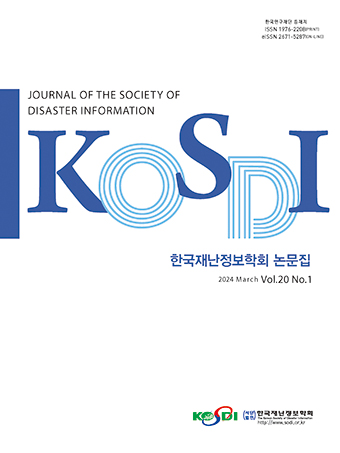Original Article
Abstract
References
Information
Purpose: The purpose is to analyze a relationship between urban characteristics and individual characteristics on the health level of individuals. Method: This study analyzed the relationship between urban characteristics and individual characteristics on individual health level in 2016 for local governments in Korea using a hierarchical linear model. Results: It was found that urban characteristics, along with individual characteristics, have a significant effect on the health level of individuals. Although the degree of influence is very large, some variables are not statistically significant, so more detailed research is needed for future urban policy. Conclusion: Although urban characteristics affect an individual's health level, additional research is needed on the variables of individual urban policies.
연구목적: 연구의 목적은 도시특성과 개인특성이 개인의 건강수준에 미치는 영향관계를 분석하는 것이다. 연구방법: 본 연구는 2016년 우리나라 지방자치단체에 대한 도시특성과 개인특성이 개인의 건강수준에 미치는 영향관계를 위계선형모형으로 분석하였다. 연구결과: 도시특성이 개인특성과 더불어 개인이 건강수준에 상당한 영향을 미치는 것으로 나타났다. 그 영향 정도가 매우 크나 일부 변수들은 통계적으로 유의하지 않아 향후 도시정책에 보다 세밀한 연구가 필요하다. 결론: 도시특성은 개인의 건강수준에 영향을 미치지만 개별적인 도시정책의 변수에 대한 추가 연구가 필요하다.
- Kim, E.J. (2016). "Conceptualizing the connections between urban regeneration and health." Journal of the Korean Urban Management Association, Vol. 29, No. 3, pp. 163-180.
- Kim, E.J., Kang, M.-G. (2011). "Effects of built environment and individual characteristics on health condition." Journal of the KRSA, Vol. 27, No. 3, pp. 27-42.
- Kim, E.J., Kim, T.H. (2016). "Where we live matters for our health? -Regional patterns of population health and urban environment-." Journal of the Korean Urban Geographical Society, Vol. 17, No. 2, pp. 149-161.
- Lachowycz, K., Jones, A.P. (2011). "Greenspace and obesity: A systematic review of the evidence." Obesity Reviews, Vol. 12, No.5, pp. 183-189. 10.1111/j.1467-789X.2010.00827.x 21348919
- McNeill, L.H., Kreuter, M.W., Subramanian, S.V. (2006). "Social Environment and physical activity: A review of concepts and evidences." Social Science Medical, Vol. 63, pp. 1011-1022. 10.1016/j.socscimed.2006.03.012 16650513
- Renalds, A., Smith, T.H., Hale, P.J. (2010). "A systematic review of built environment and health." Family and Community Health, Vol. 33, No. 1, pp. 68-78. 10.1097/FCH.0b013e3181c4e2e5 20010006
- Seo, J.G. (2015). "A hierarchical analysis on the commuting behaviors and urban spatial characteristics." Journal of the Korea Society of Disaster Information, Vol. 11, No. 4, pp. 506-514. 10.15683/kosdi.2015.11.4.506
- Seo, J.G. (2018). " A hierarchical analysis on the commuting behaviors and urban spatial characteristics II." Journal of the Korea Society of Disaster Information, Vol. 14, No. 2, pp. 182-193.
- Wendel-Vos, W., Droomers, M., Kremers, S., Brug, J., Van Lenthe, F. (2007). "Potential environmental determinants of physical activity in adults: A systematic review." Obesity Reviews, Vol. 8, No. 5, pp. 425-440. 10.1111/j.1467-789X.2007.00370.x 17716300
- Yu, J.J. (2006). "Understanding and application of hierarchical linear model." Korean Journal of Child Studies, Vol. 27, No. 3, pp. 169-187.
- Publisher :The Korean Society of Disaster Information
- Publisher(Ko) :한국재난정보학회
- Journal Title :Journal of the Society of Disaster Information
- Journal Title(Ko) :한국재난정보학회논문집
- Volume : 17
- No :3
- Pages :512-520
- DOI :https://doi.org/10.15683/kosdi.2021.9.30.512




 Journal of the Society of Disaster Information
Journal of the Society of Disaster Information







